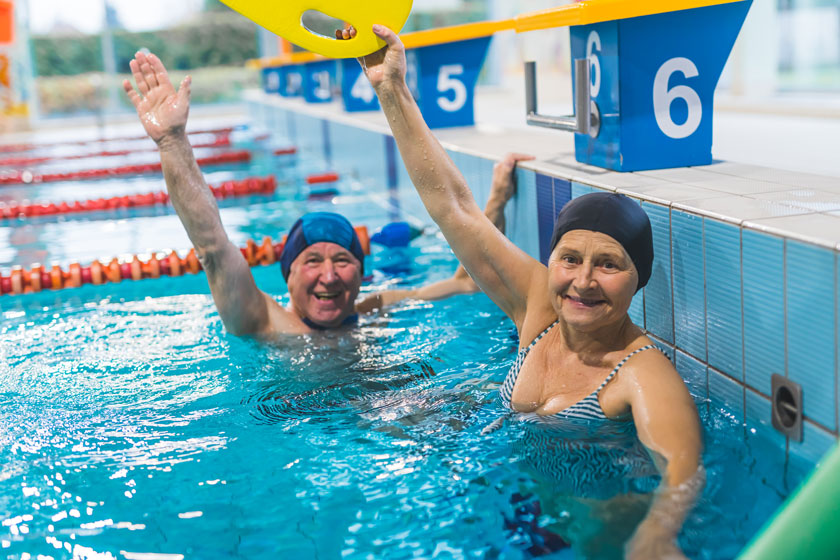Living with Parkinson’s presents unique challenges, but maintaining physical activity can help manage symptoms and improve quality of life. Whether you’re a caregiver or a family member, supporting your loved ones in staying active is crucial. In this guide, we’ll explore practical tips and strategies to help your loved ones with Parkinson’s stay physically active and engaged.
Understanding the Benefits of Exercise
Regular physical activity is the basis of managing Parkinson’s disease, offering a multitude of benefits that can significantly enhance the quality of life. One of the most notable advantages is the improvement in mobility. Parkinson’s often impairs movement, causing stiffness and difficulty with coordination.
However, engaging in consistent exercise can counteract these effects by promoting flexibility and range of motion in the joints. As muscles become stronger and more flexible, individuals with Parkinson’s can experience greater ease of movement and perform daily tasks with increased independence.
In addition to enhancing mobility, exercise also plays a crucial role in improving balance and reducing the risk of falls. Balance issues are common among those with Parkinson’s, making activities that focus on balance training essential.
Furthermore, regular physical activity contributes to overall motor function improvement. Parkinson’s disease often affects motor skills, resulting in tremors, slowness of movement, and difficulty with fine motor tasks.
Exercise has profound effects on cognitive function and mental well-being. Studies have shown that physical activity stimulates the release of neurotransmitters in the brain, including dopamine, which is deficient in Parkinson’s disease.
By increasing dopamine levels, exercise can help alleviate symptoms such as stiffness, rigidity, and tremors, while also enhancing mood and cognitive function. Additionally, regular exercise has been associated with a reduced risk of depression and anxiety, providing emotional benefits that contribute to overall well-being.
Choosing the Right Activities
When considering activities for your loved ones with Parkinson’s, prioritize exercises targeting balance, coordination, flexibility, and strength. Opt for low-impact options like walking, swimming, tai chi, and yoga, which are gentle on the joints and modifiable to accommodate varying abilities.
Additionally, activities incorporating rhythmic movements such as dancing or cycling can aid in improving motor control and coordination. Swimming provides a full-body workout with minimal stress on the joints, while tai chi emphasizes slow, flowing movements to enhance balance and posture.
Yoga combines physical postures, breathing exercises, and meditation to promote strength, flexibility, and relaxation. Dancing not only improves motor skills but also fosters social interaction and communication.
Cycling strengthens leg muscles and boosts cardiovascular health while enhancing joint mobility and mood. By incorporating these diverse activities into your loved one’s routine, you can help them manage Parkinson’s symptoms and improve overall well-being.
Incorporating Daily Movement
Encouraging your loved ones with Parkinson’s to incorporate daily movement into their routine is essential for maintaining physical function and preventing stiffness and rigidity. Simple activities such as stretching, seated exercises, and short walks can help promote flexibility, range of motion, and circulation.
Consider integrating movement breaks throughout the day, especially during prolonged periods of sitting or inactivity, to keep muscles engaged and joints lubricated.
Providing Support and Encouragement
As a caregiver or family member, your support and encouragement can make a significant difference in your loved one’s motivation to stay physically active. Offer reassurance and praise for their efforts, and celebrate their progress and achievements along the way.
Be patient and understanding, and listen to their needs and concerns, adjusting activities as necessary to accommodate their abilities and comfort level. Encourage them to set realistic goals and celebrate each milestone reached, no matter how small.
Seeking Professional Guidance
Consulting with healthcare professionals, such as physical therapists, occupational therapists, and certified Parkinson’s exercise specialists, can provide valuable guidance and personalized recommendations for your loved one’s specific needs and abilities.
These professionals can design individualized exercise programs tailored to address specific symptoms and goals, ensuring safe and effective participation in physical activity. Additionally, they can offer advice on proper techniques, modifications, and strategies for managing symptoms during exercise.
Fostering a Supportive Community
Encouraging your loved ones with Parkinson’s to engage with others in a supportive community can provide motivation, camaraderie, and a sense of belonging. Our retirement community in Newton, NC offers a range of amenities and services designed to support individuals with diverse needs and abilities.
With on-site healthcare services, social activities, and personalized care plans, we provide a comprehensive solution for promoting physical activity and overall well-being. Our team of dedicated professionals includes certified exercise specialists who can design individualized exercise programs tailored to address specific symptoms and goals associated with Parkinson’s disease.
Additionally, our vibrant community fosters a supportive environment where residents can engage with others who understand their experiences and challenges. By joining our retirement community, your loved ones can enjoy a fulfilling lifestyle while receiving the support and encouragement they need to stay physically active and engaged.
Explore our community today to learn more about how we can help your loved ones with Parkinson’s lead active and fulfilling lives.







